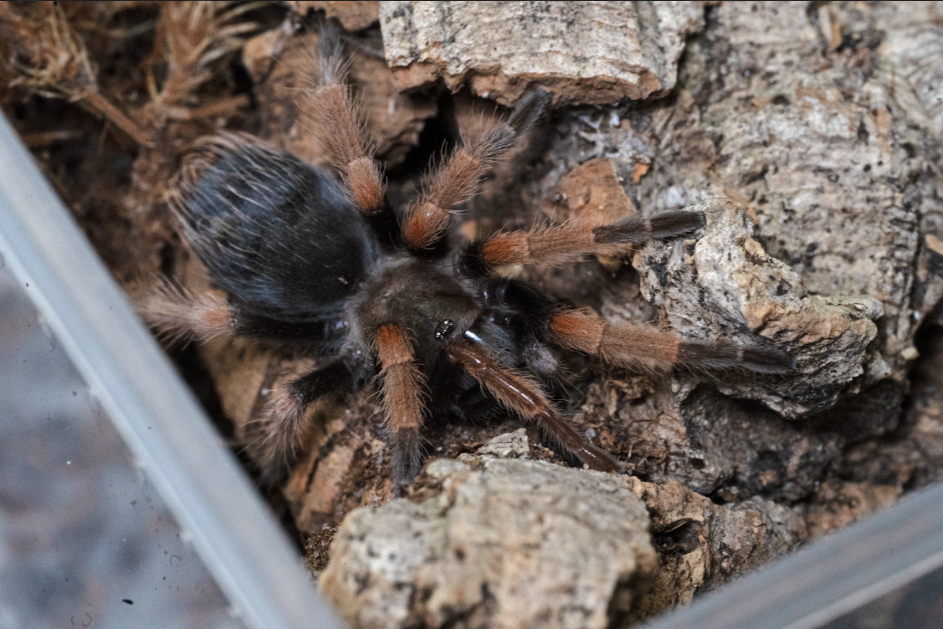What to Know Before Getting Your First Tarantula

What to Expect When Ordering Your First Tarantula
If you're considering ordering your first tarantula online, you're in the right place! Whether it's your first spiderling or you're looking to add a new species to your collection, purchasing tarantulas online can seem daunting. But don't worry! It’s easier than you think, and in this post, I’ll walk you through the process and what to expect when buying your first tarantula.
Why Order a Tarantula Online?
Many new tarantula keepers go to expos or pet stores to buy their first tarantula, but there’s a growing number of reputable breeders and retailers who sell a wide variety of species online. While the idea of ordering live animals through the mail might seem intimidating, working with a reliable breeder who ships overnight helps ensure that your tarantula will arrive safely and quickly.
When ordering online, choose breeders who ship their tarantulas with FedEx Overnight. This way, the shipment will be quick, and your tarantula is less likely to be exposed to temperature extremes or delays in transit.
Tarantula Classifications: What You Need to Know
When you're buying a tarantula, they’re typically classified by age or life stage, and these categories help you understand what to expect. Refer to these images of the Green Bottle Blue Chromatopelma cyaneopubescens at these different ages.
Spiderlings: These are the babies, often small with a gray-brown coloration. They’re the most common stage available and are an excellent starting point for beginners. As a spiderling matures, you’ll grow alongside it in experience.

Juveniles: This stage is like the awkward teenage years. They are bigger and more colorful but still growing. Juveniles often have more noticeable features and colors but aren’t quite full-grown yet. If you're nervous about caring for a spiderling but don’t want to pay the price for a full-grown female, this is a great option. They are typically more forgiving of husbandry mistakes than slings.

Adults: These are the full-grown tarantulas, often exhibiting the vivid colors and features you’ll recognize. They can be more striking, but their care is a little different from that of younger tarantulas.

New World vs. Old World Tarantulas
Tarantulas are also categorized by their geographic origins:
New World Tarantulas (NW): These species come from North, Central, and South America. Most of them can kick urticating hairs, which can cause irritation if they come into contact with your skin. New World tarantulas tend to be slower-moving with venom that is not usually considered medically significant.

Old World Tarantulas (OW): These species hail from places like Asia, India, and Africa. They often lack urticating hairs and are faster-moving. Their venom tends to be more potent and, in some cases, medically significant. While not deadly, their bites can cause a range of symptoms like nausea and headaches.

Understanding Tarantula Enclosure Types
Tarantulas can also be categorized based on their natural habitat, which affects how you should set up their enclosure.
Fossorial Tarantulas: These species burrow and spend most of their time underground. They need a deep substrate to create a burrow. Although they can be harder to observe, watching them hunt or emerge from their burrow is an exciting experience. With a clear acrylic container or Tarantula Crib, you can usually even see their tunnel systems in the soil.
Terrestrial Tarantulas: These tarantulas spend most of their time on the surface. They might burrow a bit, especially near molting time, but they’re generally easy to observe. Popular terrestrial species include the Rose Hair and Goliath Birdeater.
Semi-Arboreal Tarantulas: These species spend a lot of time on the ground but like to climb and web as well. They need a mix of space to burrow and surfaces to climb, such as branches or cork bark. It is best to think of this as setting up a terrestrial enclosure with a little bit of room to climb, but not a full arboreal setup.
Arboreal Tarantulas: These tarantulas live in trees and need tall enclosures with plenty of vertical space. While they tend to be faster and often more colorful, their needs are a bit different from terrestrial species. They enjoy webbing and often hang out in the upper branches of their enclosure.
The Process of Ordering a Tarantula Online
If you're new to ordering tarantulas online, the first step is finding a reputable breeder or dealer. Check out tarantula forums or Facebook groups for recommendations from fellow enthusiasts. You can also check out my personal list of recommended dealers here. Once you’ve chosen your dealer, look for one that offers overnight shipping and has a clear Live Arrival Guarantee (LAG). Most reputable breeders will ensure your tarantula is shipped in an insulated box with heat or cool packs to protect it during transit.
When your tarantula arrives, the packaging will likely include a dram vial or similar container with some moist paper towels. Carefully unpack it, and if needed, use tweezers to guide the tarantula into its new enclosure. Be ready with a catch cup in case the tarantula decides to make a run for it.
Setting Up the Right Enclosure
The most common mistake I see when people receive their first tarantula is not having the right-sized enclosure. For spiderlings, smaller is often better, and you want to make sure there are no large gaps where they can escape. A small dram vial or an appropriately sized enclosure will keep them safe.
As your tarantula grows, you can gradually upgrade its enclosure. For most tarantulas, room temperature (around 68 to 75°F) is ideal, with a slight humidity boost for spiderlings.
Feeding Your First Tarantula
When it comes to feeding your spiderling, there are many options. I like to use confused flour beetles, which work great for tiny tarantulas, but you can also use tiny crickets or even chopped-up pieces of larger prey like mealworms. Keep an eye on what your tarantula eats, and remove uneaten prey after 24 hours to prevent mold and mites.
Growing Up: How Fast Do Tarantulas Grow?
Growth rates can vary greatly between species. Temperature, humidity, and feeding schedule all play a role in how quickly your tarantula matures. Some tarantulas, like Grammostola or Aphonopelma species, grow very slowly, while others might mature faster. The most important thing to remember is that tarantula care requires patience, especially when raising a spiderling.
A Word of Caution
Before you dive headfirst into the tarantula hobby, I want to warn you about one thing: it’s incredibly addictive! It’s easy to go from owning one tarantula to owning 15. Tarantulas need space, and eventually, those little spiderlings will grow up and require larger enclosures. So make sure you have the room and the patience for a growing collection.
Written by Richard from Tarantula Collective – 5/14/2025
Relevant Videos:
- Josh Halter










